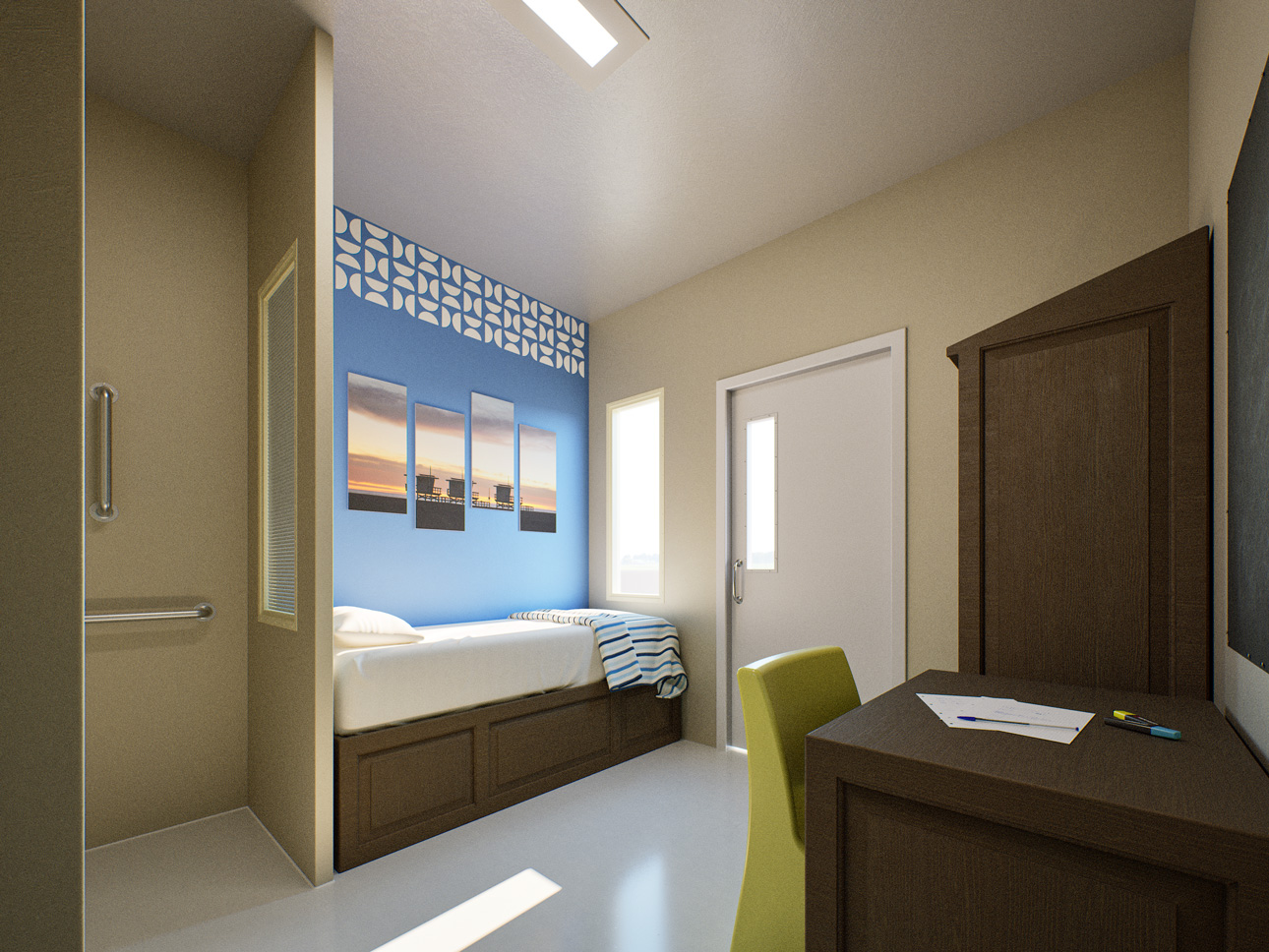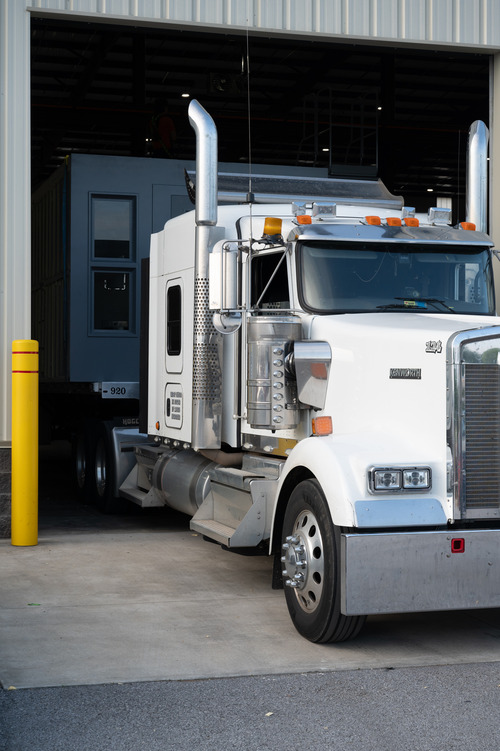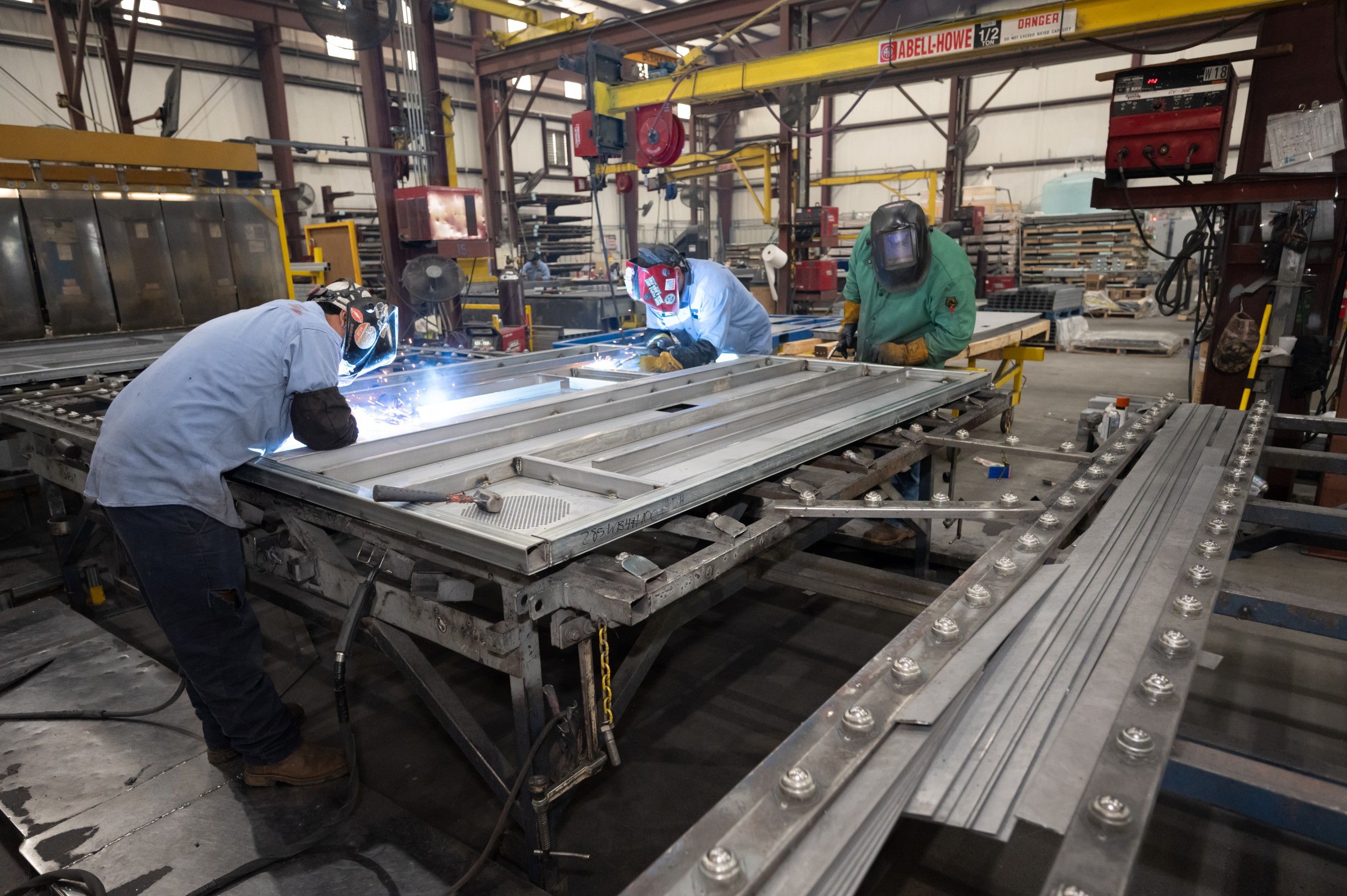What to Look for When Choosing Security Locks: Ensuring Maximum Safety for Prisons and Behavioral Health Facilities
Selecting the right security locks for a prison or behavioral health facility is a task that requires careful consideration of various factors. These facilities have unique security needs that go beyond those of standard commercial or residential properties.
Locks in these environments need to prevent escapes and protect staff and residents. They also have to adhere to stringent regulations designed to ensure safety and humaneness. This entails a balance between maintaining maximum security and providing a safe, non-threatening atmosphere for those within the facility.
It is essential to comprehend the different types of lock mechanisms available and how they function within the context of a correctional or behavioral health environment.
Compatibility with existing security systems and protocols, durability against tampering or damage, and ease of use by authorized personnel are all important factors. Additionally, considering specialized requirements—such as ligature-resistance to prevent self-harm in a behavioral health setting—can inform which locksets are appropriate.
Given these multifaceted requirements, the choice of security locks demands a blend of technical understanding and a sensitivity to the particular needs of the facility’s occupants.
Key Takeaways
- Security locks for sensitive environments must balance safety and security with regulatory compliance.
- Understanding lock mechanism types and specialized requirements is crucial in choosing the right lockset.
- Installation and maintenance are as important as the initial selection of security locks to ensure long-term reliability and cost-effectiveness.
Understanding Security Lock Mechanisms
When selecting security locks for a prison or behavioral health facility, one must understand the differences in lock mechanisms and their specific features that enhance security.
It is crucial to choose locks that can withstand various types of compromise attempts.
Cylindrical Versus Mortise Locks
Cylindrical locks are commonly used due to their straightforward installation process, which involves inserting the lock through the door. These consist of a key cylinder that operates the locking/unlocking mechanism.
Cylindrical locks are more suited for interior doors where security demands are less stringent.
Mortise locks, on the other hand, are known for providing superior security. They require a pocket—the mortise—to be cut into the door where the lock is fitted. This type of lock generally includes a cylinder for the key operation, and a mortise lock case that contains the bolt work mechanisms.
High-Security Lock Features
High-security locks often come with features designed to resist tampering and forced entry. These may include:
- Hardened steel inserts to frustrate drilling.
- Anti-pick mechanisms that hinder lockpicking attempts.
- Patented key control systems requiring proof of authorization for duplication.
Furthermore, high-security cylindrical or mortise locks may use complex keyways that complicate the use of lockpicks and support the use of restricted keyways. They can also integrate electronic components for keyless entry, adding another layer of security.
Compliance with Standards and Regulations
When selecting security locks for a prison or behavioral health facility, compliance with established standards and regulations is paramount. These compliance measures ensure safety, accessibility, and legal adherence, which are critical for the facility’s operation and the wellbeing of its occupants.
The Joint Commission Standards
The Joint Commission is an independent organization that accredits and certifies healthcare organizations in the United States. To comply with The Joint Commission’s standards, security locks must align with patient safety standards.
Locks should facilitate swift egress in the event of an emergency while preventing unauthorized access. Facilities must regularly inspect these locks to maintain their functional reliability.
Americans with Disabilities Act (ADA) Compliance
Locks must also comply with the Americans with Disabilities Act (ADA), making sure that individuals with disabilities have equal access to the facility.
ADA compliance involves:
- Ease of Use: Locks must be operable with one hand, without tight grasping, pinching, or twisting of the wrist.
- Installation Height: Hardware must be installed at prescribed heights, typically between 34 inches and 48 inches above the floor, allowing accessibility for individuals in wheelchairs.
These regulations are critical for maintaining an inclusive environment that supports the dignity and rights of all individuals in the facility. Compliance not only upholds legal standards but also embodies an ethical commitment to equal access and safety.
Ligature-Resistance in Healthcare and Correctional Facilities
When selecting security features for environments like healthcare facilities and correctional institutions, it’s crucial to invest in ligature-resistant products to enhance patient safety and prevent self-harm.
Defining Ligature-Resistant Products
Ligature-resistant products are designed to reduce the risk of an individual using the object as a point of ligature, which is a method of binding or fastening.
These products do not offer easily accessible points where cords, ropes, bedsheets, or other materials could be attached for the purpose of self-harm or unauthorized use.
In environments such as psychiatric hospitals or behavioral health facilities, ligature-resistant locks and fixtures are critical in ensuring the well-being and safety of individuals.
Selection Criteria for Ligature-Resistant Locksets
When choosing ligature-resistant locksets for correctional or behavioral health settings, specific criteria must be considered to ensure they effectively contribute to patient safety and facility security.
First, these locksets should meet or exceed industry standards for anti-ligature design—essentially eliminating points where a ligature could be attached. They also need to be constructed from heavy-duty, tamper-resistant materials to withstand potential abuse and ensure longevity.
One must assess the ease of use for staff while ensuring that it does not compromise safety for the occupants. These locksets often feature smooth surfaces with sloped edges and minimal gaps to prevent them being used as ligature points.
Material and Build Quality of Locksets
When choosing locksets for prisons or behavioral health facilities, it’s crucial to consider the grade of the lockset and the quality of materials used, along with the durability and available finish options. These factors directly impact the security and longevity of the locking mechanisms.
Understanding Grades of Locksets
Locksets are categorized into Grade 1, Grade 2, and Grade 3, with Grade 1 being the highest level of security recommended for commercial and institutional use.
Grade 1 locks offer the highest level of durability and are typically made from stronger materials. They can withstand significant wear and tear, making them ideal for high-security environments like prisons or behavioral health facilities where the strength of the lock is crucial to maintain safety and prevent unauthorized access.
Assessing Durability and Finish Options
The durability of a lockset is a key determinant of its longevity and reliability.
When assessing durability, one must examine the build quality, which includes the construction of the lock’s core components.
The finish of the lockset not only contributes to the aesthetic but also to the lock’s resistance to corrosion and tarnishing.
Facilities should seek out finishes that can withstand harsh cleaning agents or environmental conditions, such as PVD (Physical Vapor Deposition) finishes, which are known for their higher resilience.
- Finishes: A variety of finishes are available, each with its own level of quality and suitability for different environments:
- Satin chrome – Commonly used for its durability and resistance to corrosion.
- Bright brass – Offers a traditional look but may require more maintenance.
- Stainless steel – Known for its strength and resistance to rust.
Integrating Locks with Facility Design
When designing a prison or behavioral health facility, the selection and integration of security locks are imperative. They must complement the overall architecture while ensuring the safety and rehabilitation of residents.
Balancing Aesthetics and Functionality
Choosing door hardware should never compromise on security. Manufacturers provide various designs that blend with the facility’s aesthetic while being tamper-proof and durable.
Aesthetics play a crucial role in making the environment less institutional; however, they should not impede the lock’s primary function.
It’s important to look for locks with anti-ligature features to prevent any misuse by individuals, helping maintain a balance between design and practical safety requirements.
Creating a Healing Environment
Security measures must foster a healing environment. This means locks and door hardware should be unobtrusive and contribute to a calming atmosphere.
For instance, locks can feature sound dampening technologies to minimize jarring sounds that disrupt the therapeutic milieu. Additionally, color and finish options should be selected to create an environment conducive to healing, aligning with evidence-based designs which suggest that certain colors can have a calming effect on individuals.
Innovations in Security Lock Technology
The landscape of security lock technology is witnessing significant advancements aimed at enhancing safety within correctional and mental health facilities. Modern locks integrate sophisticated mechanisms that address both hygiene and digital control systems concerns.
Antimicrobial Coatings and Healthcare
In an era where health and cleanliness are paramount, antimicrobial coatings provide an essential layer of protection against the transmission of infectious diseases.
They have become a critical feature in security locks for prisons and behavioral health facilities, where the risk of microbial proliferation is high due to heavy foot traffic and frequent physical contact with surfaces.
These coatings are specifically engineered to inhibit the growth of bacteria, mold, and mildew, thereby contributing to a safer and more sanitary environment for both staff and residents.
Access Control System Compatibility
For heightened security, today’s locks have evolved to seamlessly integrate with comprehensive access control systems.
These systems typically offer customized levels of access to different areas of a facility, ensuring that only authorized personnel can enter sensitive zones.
Advanced digital interfaces allow for real-time monitoring and can log entry and exit instances, which is crucial for maintaining order and security in high-risk settings.
Compatibility with existing IT infrastructure is a key consideration, as it facilitates easier updates and scalability to meet the evolving demands of the facility.
Installation and Maintenance Considerations
When selecting security locks for prisons or behavioral health facilities, administrators must weigh the ease of installation against the complexity of maintenance tasks. These considerations often dictate the long-term reliability and safety of the security system.
Ease of Installation
Security locks should come with thorough guidelines ensuring they can be installed efficiently and correctly. It’s important that they are compatible with existing doors and frames to avoid additional modifications.
For example, Behavioral health design guidelines suggest that consideration for motion sensors and tamper-resistant features should be assessed during the installation process.
Best Practices for Maintenance
Routine maintenance is key to operational integrity. Facilities should follow the manufacturer’s best practices for maintenance to sustain functional longevity.
This often includes regular cleaning, checking for wear and tear, and testing lock functionality. The use of correction standards is advised to maintain a benchmark for security.
Security Locks and Behavioral Health Facility Staff
Selecting appropriate security locks for a prison or behavioral health facility is crucial for maintaining safety while also ensuring that staff are able to perform their duties efficiently.
This involves understanding the lock mechanisms and integrating them with staff training, as well as considering their impact on the daily operations within the facility.
Training and Familiarization
Proper staff training is essential to ensure that all security protocols are followed and that behavioral health units, such as those regulated by the New York State Office of Mental Health, operate smoothly.
Nurses and other staff members must be thoroughly familiarized with the lock systems, which include understanding how to efficiently operate locks during an emergency.
Facilities should schedule regular training sessions to help staff retain their knowledge and skills regarding the security system.
- Regular lock operation drills for staff
- Instruction on emergency lock override procedures
Impact on Daily Operations
The type of locks installed in a behavioral health facility can significantly affect its daily operations.
Locks should be designed in such a way that they enhance security without causing unnecessary delays or hindrances for the staff, especially nurses who require frequent access to patients’ rooms.
It’s vital to choose locks that can be seamlessly integrated into the staff’s routine, minimizing disruptions to patient care.
- Locks synchronized with staff access cards to ensure swift movement
- Systems that allow for remote unlocking by authorized personnel during specific scenarios
Cost-Benefit Analysis of Security Lock Systems
When deciding on security locks for a prison or behavioral health facility, administrators must weigh the initial investment against long-term safety and financial benefits.
Long-Term Considerations for Budgeting
Security locks are a long-term investment in the safety and integrity of an institution.
Facilities must evaluate the lifetime costs of lock systems, which include maintenance, potential for system upgrades, and any associated labor costs.
Budgeting for security systems should account for the possibility of technological advancements that could render current systems obsolete.
Moreover, they should consider whether higher-priced locks will reduce the risk of costly security breaches in the future.
Comparing Price Versus Performance
It is essential to compare the price of various lock systems with their performance metrics.
In a security setting, performance is measured by the lock’s ability to resist tampering and unauthorized access.
Institutions must compare the following:
- Durability: A higher upfront cost might be justified if the lock’s lifespan and resilience to damage are significantly greater.
- Ease of Integration: The cost to integrate locks with existing security systems should be factored into the overall price.
- Vendor Support: Consider the vendor’s support options and warranty, as this will affect long-term maintenance costs.
Frequently Asked Questions
When selecting security features for correctional or behavioral health facilities, robust locks are paramount. These FAQs address specific concerns about high-security locks, providing insights for those responsible for the safety and security of such institutions.
What factors should be considered when selecting high-security locks for correctional facilities?
One must assess the lock’s resistance to tampering, its compliance with industry standards, and the versatility to fit various door types and materials commonly found within correctional institutions.
How do Medeco locks compare to other brands in terms of tamper resistance for psychiatric units?
Medeco locks are known for their patented key control and use of hardened steel inserts, making them highly resistant to coercion and tampering, an essential feature for psychiatric unit security.
What are the benefits of using SteelCell locks in high risk environments?
ASSA 7000 Series deadbolts come with features such as saw-resistant bolts and drill-resistant cylinders, which greatly enhance the security in environments where breach attempts are a concern.
What makes Mul-T-Lock systems suitable for behavioral health facility security measures?
Mul-T-Lock systems are suitable because they employ complex locking mechanisms and keys that are difficult to replicate. These systems meet high standards of security protocols required for behavioral health facilities.
How does the durability of SteelCell’s electromagnetic locks affect the safety of inmates and staff?
ASSA Ruko padlocks are designed for high usage and resistance to environmental factors, which ensures the ongoing safety of both inmates and staff by minimizing the potential for lock failure.
In what ways do high-security lock features prevent unauthorized key duplication?
High-security locks often include patented key designs and restricted keyway profiles. These features control the distribution of keys and prevent unauthorized duplication, a crucial factor for maintaining facility security integrity.


